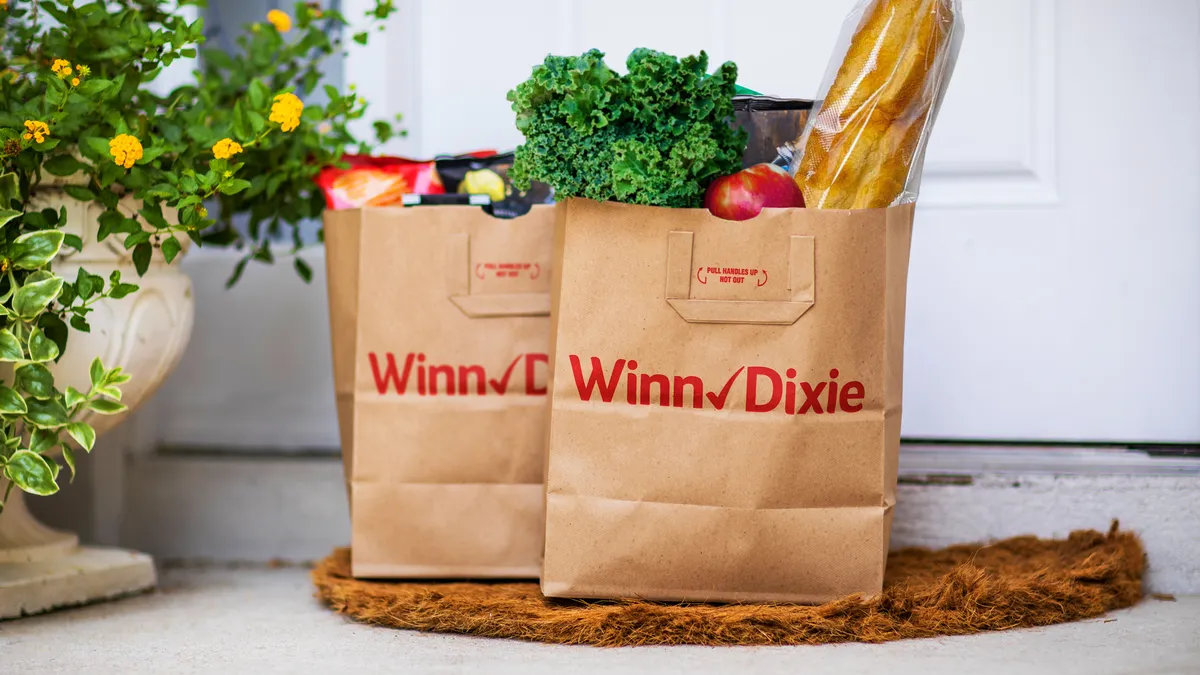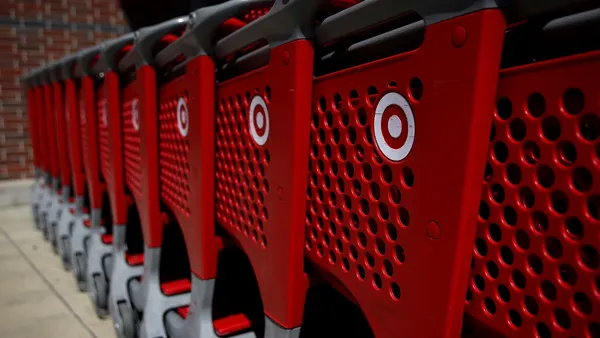Dive Brief:
- Grocery e-commerce sales came in at $7.7 billion in June, a gain of 8% compared with the same period in 2023 that was driven by a sharp increase in delivery orders, according to data released Monday by Brick Meets Click and Mercatus.
- Pickup claimed 45% of U.S. online grocery sales last month, followed by delivery, which accounted for more than a third of the market. The ship-to-home channel notched just under 17% of the market.
- Mass retailers attracted a larger share of the grocery e-commerce sector than they did a year ago while traditional supermarkets continued to lose ground in the digital arena.
Dive Insight:
Online grocery sales rebounded in June after falling during the previous month, with a sharp rise in delivery orders compensating for flat pickup sales.
Delivery sales rose to $2.9 billion in June, an 18% surge Brick Meets Click and Mercatus attributed to growth in the channel’s base of monthly active users and order activity that it said stemmed from membership fee discounts offered by Instacart and Walmart. The channel’s average order value, however, fell during the month.
The increase in grocery e-commerce sales reversed a slight year-over-year decrease in May that was led by a decline in pickup.
Pickup sales held steady at $3.5 billion even though the fulfillment channel saw an increase in the number of monthly active users, primarily because shoppers used the channel less often and spent less per order on average. But while those factors helped bring down pickup’s share of the online grocery market by more than 3 percentage points year over year, the channel remains significantly ahead of delivery in terms of market share.
The ship-to-home portion of the digital grocery space took home a larger share of the e-grocery market in June for the fourth consecutive month. The format, which comprises orders fulfilled by shippers like FedEx and UPS, accounted for $1.3 billion in sales last month, a 10% year-over-year increase.
Brick Meets Click said growth in the online grocery sector last month mainly reflects an increase in the number of orders from people who placed digital orders in the past. The overall number of households that have ever bought groceries online was up by only a fraction of a percentage point.
The data show traditional grocers are losing ground online in part because more people with annual incomes below $50,000 are directing their grocery dollars towards mass retailers.
Grocers should use promotions to nudge customers who have placed online orders in the past but not done so recently to return to the digital market, Mark Fairhurst, chief growth officer at Mercatus, said in a statement.
“Regional grocers need to stem the tide and regain market share by leveling the playing field against mass merchants, despite these rivals having a price advantage,” Fairhurst said.
The findings are based on a survey of 1,744 shoppers Brick Meet Click conducted over a two-day period beginning June 30.














